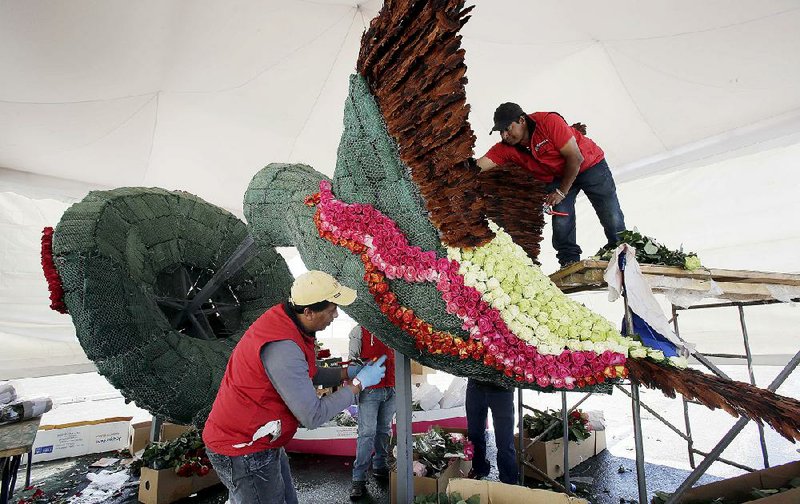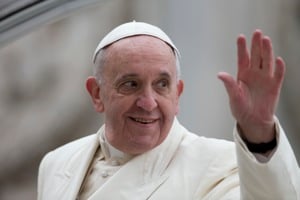QUITO, Ecuador -- Pope Francis has turned heads with bold stands on climate change and income inequality. He helped broker a historic thaw between the United States and Cuba. He has shaken up the image of the Roman Catholic Church.
But his trip to South America, which begins today, will test his skills in putting parishioners in pews and keeping them there.
Francis, 78, is flying to South America for a nine-day visit to three of the region's poorest countries, Ecuador, Bolivia and Paraguay in which he is likely to focus on the poor and may challenge policies on oil and gas drilling.
During the visit, Francis will meet prisoners, slum-dwellers and grass-roots groups representing indigenous peoples and landless peasants. He will deliver 13 speeches and six homilies to crowds likely to run into the hundreds of thousands.
Francis's message is for God's "children most in need, to the elderly, the sick, the imprisoned, the poor, to those who are victims of this throw-away culture," he said in a statement on the eve of the trip.
Francis also is set to discuss his encyclical, "Laudato Si' (Praised Be)," on the environment, a letter to bishops in which he addressed humanity's effect on the environment and the actions of profit-motivated development.
In Ecuador, President Rafael Correa recently angered indigenous and environmental groups for pushing to open the country's Amazon rain forest to increased oil drilling and mining exploration. In Bolivia, President Evo Morales is boosting oil and gas drilling.
The pope will meet both Correa and Morales.
Francis' selection as the first pontiff from Latin America, in March 2013, signaled how vital the developing world is to the church's future and offered a way to reverse its erosion in Latin America, a region that holds almost 40 percent of the world's Catholics but has experienced a steady rise in secularism and competing branches of Christianity.
But the Vatican's change of tone -- with a pope who champions the poor and eschews many of the luxurious trappings of his office, and even poses for selfies with followers -- has raised the hopes of many churchgoers.
"Before Pope Francis, the Catholic Church was out of reach," said Rosario Zuniga, a volunteer at a church here who credited Francis with "a new, more human" approach. "He has touched on very sensitive subjects about the attitude of the church regarding its own mistakes, like sex abuse."
But whether a change of image at the top will be followed by results on the ground remains a pressing question across the region.
In Argentina, Francis's native country, the director of a Catholic association said that while the pope had personally ignited excitement and interest, attendance at church services and the number of Catholic marriages had barely increased.
"There is an asymmetry," said the director, Justo Carbajales, 56, a cardiologist. "Argentines have strengthened ties with the figure of the pope, but still not at all with the church."
In Quito, the capital of Ecuador, where the pope will begin his visit to Latin America, Archbishop Fausto Trávez acknowledged concern over what he called the church's decline in recent decades, including a dwindling number of priests.
But he said he thought that the pope's influence could be seen through increased attendance at Mass, increased collections and a recent rise in the number of seminary students studying to become priests.
"With everything that he says about the poor and about justice," Trávez said of Francis, "the young people become motivated." He added that many had entered seminary "because the pope is doing things that they would like to do."
As recently as the early 1970s, at least 90 percent of Latin Americans were Catholic, according to the Pew Research Center. But that number began to fall as Protestant churches grew. In a survey published in November by the Pew Center, 69 percent of adults in Latin America identified as Catholic.
"It's a free market of faith in Latin America," said Andrew Chesnut, a professor at Virginia Commonwealth University who was a consultant on the Pew survey. "The Catholic monopoly they had for four centuries is over."
During his visit, the pope will preside over several Masses expected to draw hundreds of thousands of worshippers, and some will include texts in indigenous languages.
As for the visit by Francis, Trávez said, "I think that there are lots of people who realize that the pope is coming to rescue the lost sheep."
Information for this article was contributed by William Neuman, Simon Romero, Maggy Ayala, John Gilbert and Gaia Pianigiani of The New York Times and by John Follain and Nathan Gill of Bloomberg News.
A Section on 07/05/2015

